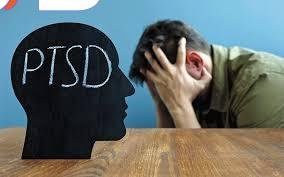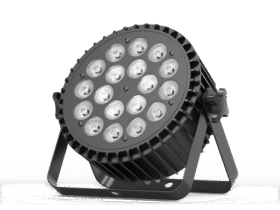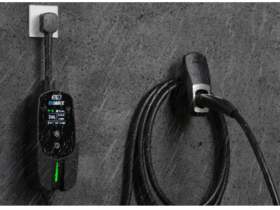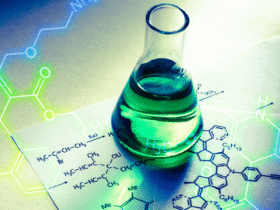Consider a 15-year-old boy named Alex, who seems engaged and energetic one day and withdrawn the next. He begins to slip in school, his grades drop, and he may change friends. What begins as a way to fit in with peers by vaping or sneaking drinks spirals into a daily practice. Alex develops the ability to hide the pain from the anxiety that keeps him up at night.
This is a familiar story to many families. Dual diagnosis in teenagers means that not only does the adolescent struggle with a substance use disorder but also a mental health diagnosis, such as depression or ADHD. Accessing early Adolescent Mental Health Treatment can make a critical difference, especially when emotional struggles begin to overlap with risky behaviors.
Numerous studies show that approximately half of adolescents with one problem will develop the other. Early identification and co-occurring treatment can change everything. They connect teens to healthier futures. The goal of this guide is to provide parents, caregivers, and educators with an organized and useful step-by-step approach to identify signs, recognize symptoms and causes, and access effective treatment for co-occurring mental health and substance use disorders.
Section 1: Acknowledging the Signs: Recognizing Dual Diagnosis In Adolescence
Detecting dual diagnosis in adolescents is challenging. Symptoms from mental health issues and substance use can intermingle. For example, a teen may use alcohol to quiet racing thoughts stemming from anxiety, but the alcohol may then heighten already fluctuating moods. The convergence of both conditions establishes a cycle difficult to unwind, unless observed through a more expert lens. Parents need to be vigilant in observation, as teens are adept at hiding their anxieties and struggles.
Concealing Positive Symptoms: How Substances Can Mask Mental Illness
Using substances can often act as an immediate remedy for deep psychological wounds. For example, consider an adolescent dealing with depression. The teen may turn to marijuana to take the edge off the sadness. While it may dull the struggle for a short duration, depression will always resurface harder and heavier. Anxiety may escalate with an adolescent, and in an attempt to calm their panic, the young person may turn to pills.
Once the effects wear off, the adolescent may enter withdrawal, and panic attacks can set in, mirroring the exact fear. If the “break” comes from trauma as a result of a difficult family environment, alcohol may dabble in obscuring bad memories, but may eventually contribute to more chaos. Simply put, intoxication muddies the waters of development—slurred speech or odd behaviors simply lead to people dismissing the behavior to “just being a teen,” instead of an indication for help. These processes illustrate how drugs and alcohol can conceivably mask the mental illness or indeed become facilitators in hiding the mental illness—preventing the individual from moving forward and healing Margaret (not her real name), now 18 years old experienced numerous such symptoms and was treated throughout her treatment for adolescent group therapy for addiction, depression, anxiety, and anger management.
Behavioral Indicators of Co-Occurring Disorders
The following behavioral changes indicate that something is likely going on. Consider monitoring these behavioral changes in adolescents for a possible dual diagnosis:
- Significant declines in academic performance due to not completing assignments or failing tests.
- Distant from family and previous friends, and migrating toward a newer crowd that parties.
- Sleep problems, either staying up really late or sleeping all day, and big changes in appetite.
- Hiding alcohol, vapes, or pills, and becoming defensive if you question them about it.
- Extreme mood changes that go from angry to crying for no reason.
Section 2: The Importance of Integrated Treatment Models
When you see the red flags, it’s time for action. Integrated treatment simultaneously addresses substance use and the mental health component. You’re always going to be better off treating it all at once instead of sequentially.
Adolescents require that their treatment fit their whole person. Integrated treatments decrease the risk for relapse while teaching adolescents the acquisition and enhancement of skills. Let’s look at how this might be.
Differentiating between Integrated Care versus Sequential Care
Integrated care means a team provides both conditions immediately (right away). Counselors, doctors, and therapists function as one team. They witness how anxiety initiates drinking and they treat the cause. Sequential care is later—for example, complete detox prior to getting into therapy. Sequential care often fails because the time between care allows for rebound health problems.
If integrated care is used, integrated care works best for dual diagnosis in adolescents. Studies show integrated care programs result in better outcomes with youth remaining sober longer than sequential care approaches.
Evidence-Based Treatments for Co-Occurring Disorders
Certain types of talk therapy and skills training fit well in this scenario. In cognitive behavioral therapy, or CBT, therapists help adolescents identify thought traps that contribute to drug use. Adolescents learn to change behaviors; if an adolescent experiences panic attacks for example, they practice breathing techniques rather than using pills for that panic.
Dialectical behavioral therapy, or DBT, develops emotion control, specifically for mood swings associated with drug use. Another talk therapy is family systems therapy, which engages parents and the connection of family dynamics to addiction. There are controlled research trials to support these treatments, with 60-70% of youth able to stay sober in the study.
For teens needing structured, round-the-clock care, programs such as Residential Rehab in CA provide a supportive environment where mental health treatment and addiction recovery happen together.
Conclusion: A Way Forward
Dual diagnosis in adolescents introduces significant obstacles, but there is hope. Professionals closely monitor the warning signs, gather insight about the causal factors, and deliver integrated treatment, so recovery is achievable and possible. Parents can advocate by discussing, advocating for the best options, and providing ongoing support. Teens may live, not merely exist. Your continued efforts will lead to success.
- Recognize the red flags early to break the cycle sooner.
- Decide on an integrated treatment program and pursue optimal long-term outcomes.
- Engage in open conversation and build a torch-lighting team—you are not doing this alone.
Consider the home a therapeutic home—and offer boundaries and love to develop attachment.
If your teen demonstrates signs or symptoms of dual diagnosis disorder, seek treatment today. One conversation can become a journey toward a better future.
The moment you connect, support through attachment therapy starts, and start the journey toward an engaging, durable treatment path.












Leave a Reply